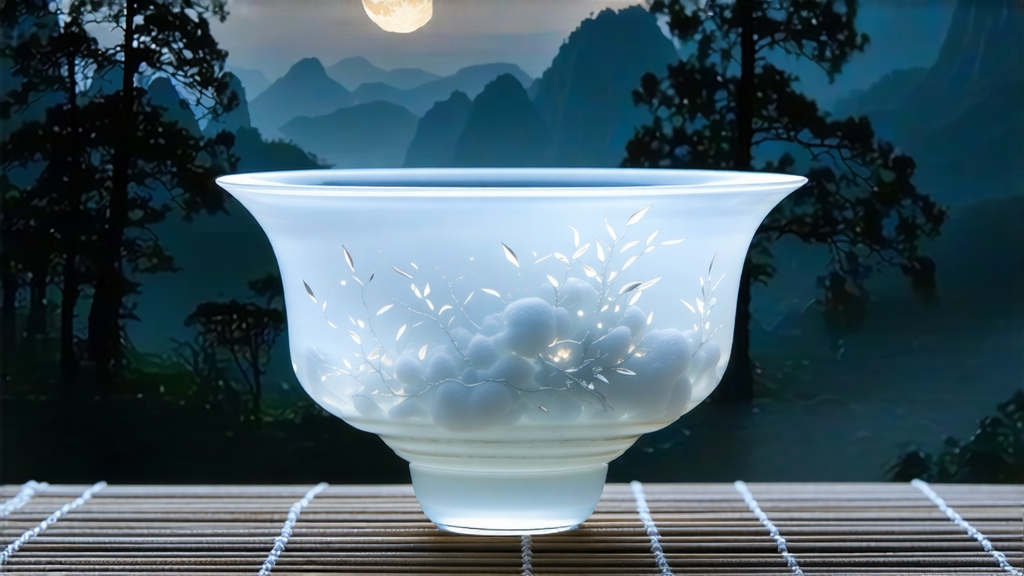
Tucked away in the cloud-veiled mountains of southern Yunnan, where the Mekong bends like a silver ribbon and the air smells of pine and wild orchids, a tea as pale as moon-glow quietly transforms the global image of Chinese white tea. International drinkers know Bai Hao Yin Zhen and White Peony, yet few have tasted the voluptuous, almost perfumed liquor known in China as Yue Guang Bai—“Moonlight White.” Part legend, part meticulous craft, this relatively young cultivar has slipped out of the shadows only in the last two decades, but its roots reach deep into the ancient tea forests of Yunnan Province.
1. Origins and Myth
Local tea elders recount that Moonlight White was first made in 2003 by a Jingmai Mountain producer who wanted to apply Fujian white-tea techniques to the region’s indigenous Da Ye (large-leaf) assamica trees. One version of the story claims the leaves were withered entirely at night, exposed only to moonlight so that “the cool yin energy would seal the fragrance.” Romantic as it sounds, night withering was born of necessity: high-altitude temperatures drop sharply after sunset, slowing moisture loss and allowing a longer, gentler oxidation phase. Whatever the origin tale, the result was astonishing—leaves that dry to a striking two-tone: silvery white pubescence on the bud side, charcoal black on the leaf back, as though dipped in ink and then rolled in stardust.
2. Botanical Identity
Unlike classic white teas built on the small-leaf Fujian cultivar Fuding Da Bai, Moonlight White is crafted from Yunnan’s ancient tea trees—often 100–300 years old—belonging to Camellia sinensis var. assamica. The leaves are broader, thicker, and richer in polyphenols, caffeine, and L-theanine. This biochemical generosity translates into a cup that is simultaneously delicate and brooding: light in color yet plush in texture, with an enduring sweet finish that Fujian whites rarely achieve without several years of age.
3. Plucking Standard
Top-grade Moonlight White observes a “one bud, one leaf, half-open” rule. Pickers harvest at dawn, before the mountain mist lifts, ensuring buds remain turgid and cool. Any direct sun at this stage would accelerate enzymatic activity and flatten the later layers of aroma. The pluck is laid in shallow bamboo baskets lined with cheesecloth to prevent bruising, then carried to the withering loft within two hours.
4. Craft: The 72-Hour Moonlight Wither
The hallmark of Moonlight White is an unhurried withering cycle that lasts roughly three days and two nights. The loft—usually the upper floor of a Dai minority stilt house—has latticed walls and a corrugated roof that can be rolled back. During daylight the leaf rests in shade; at night the roof opens to mountain breezes and, supposedly, lunar photons. Moisture falls from 75 % to below 10 % without any forced heat, so cell walls degrade softly, releasing a cocktail of floral volatiles—linalool, geraniol, hotrienol—normally locked inside assamica’s tough foliage. No rolling, no pan-firing, no baking. The only intervention is a single hand-turn at the 36-hour mark to equalize drying. When complete, the leaves feel feather-light yet resilient, a tactile paradox that signals perfect wither.
5. Grades and Styles
Commercial Moonlight White is divided into three grades:
- Imperial Moonlight: 95 % silver buds, downy and crescent-shaped.
- Heritage Moonlight: 50 % buds, 50 % first leaf; the everyday luxury.
- Forest Moonlight: larger leaves, minimal buds, pressed later into 100 g cakes for post-fermentation experiments.
Each grade carries the same processing DNA but offers a different aging trajectory. Bud-heavy Imperial is creamy and orchid-like when young; after five years it develops marzipan and white peach. Forest grade, meanwhile, edges toward woody cacao under the influence of Yunnan’s humid monsoon.
6. Brewing: The Cold-Aurora Method
Western guides often treat white tea as a fragile creature needing 75 °C water and quick infusions. Moonlight White, thanks to its assamica backbone, welcomes bolder parameters. The author’s